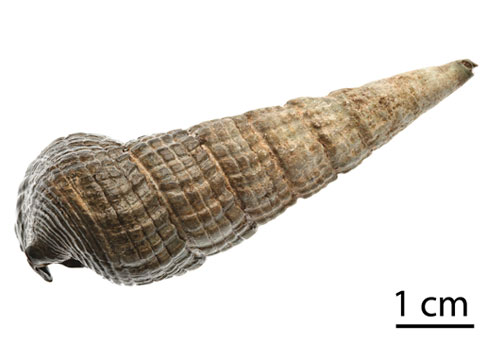Biology
Males are aphallate (without a penis) and sperm are transferred to females in an elaborate mucous packet (spermatophore) about 5mm long.
Females deposit large egg masses on the roots of mangroves, just above the mud surface. These masses consist of a coiled mucous string (over 1m long if unwound) within which several thousand eggs about 0.2mm in diameter are embedded. The eggs hatch into free-swimming planktonic larvae, but the duration of this veliger stage is unknown.
Growth is rapid, and young snails reach adult size in about 4 years. Juveniles have been recorded to increase their shell length by up to 10mm in 4 months. Growth is determinate, ceasing once the apertural lip has become flared and thickened. The oldest shells may even shrink in length, as the earliest spire whorls become eroded by the acidic mangrove soil.
Predation by shell-crushing crabs and rays can be severe in mangrove habitats. Juveniles may be susceptible, but as adults the thick shells are resistant to crushing by all but the strongest crabs.
The main predator of adults is the large mud crab Scylla serrata. The thickened varices of the shell - and particularly the ventrolateral varix on the body whorl - probably serve as a defence against shell crushing - even if the vulnerable aperture is broken, a crab may not be able to ‘peel’ the shell back past the varix.
If the animal survives a predation attempt, the damaged shell is regrown and the breakage remains as an obvious scar. Large shells often bear several such scars, indicating the intensity of predatory attack.
